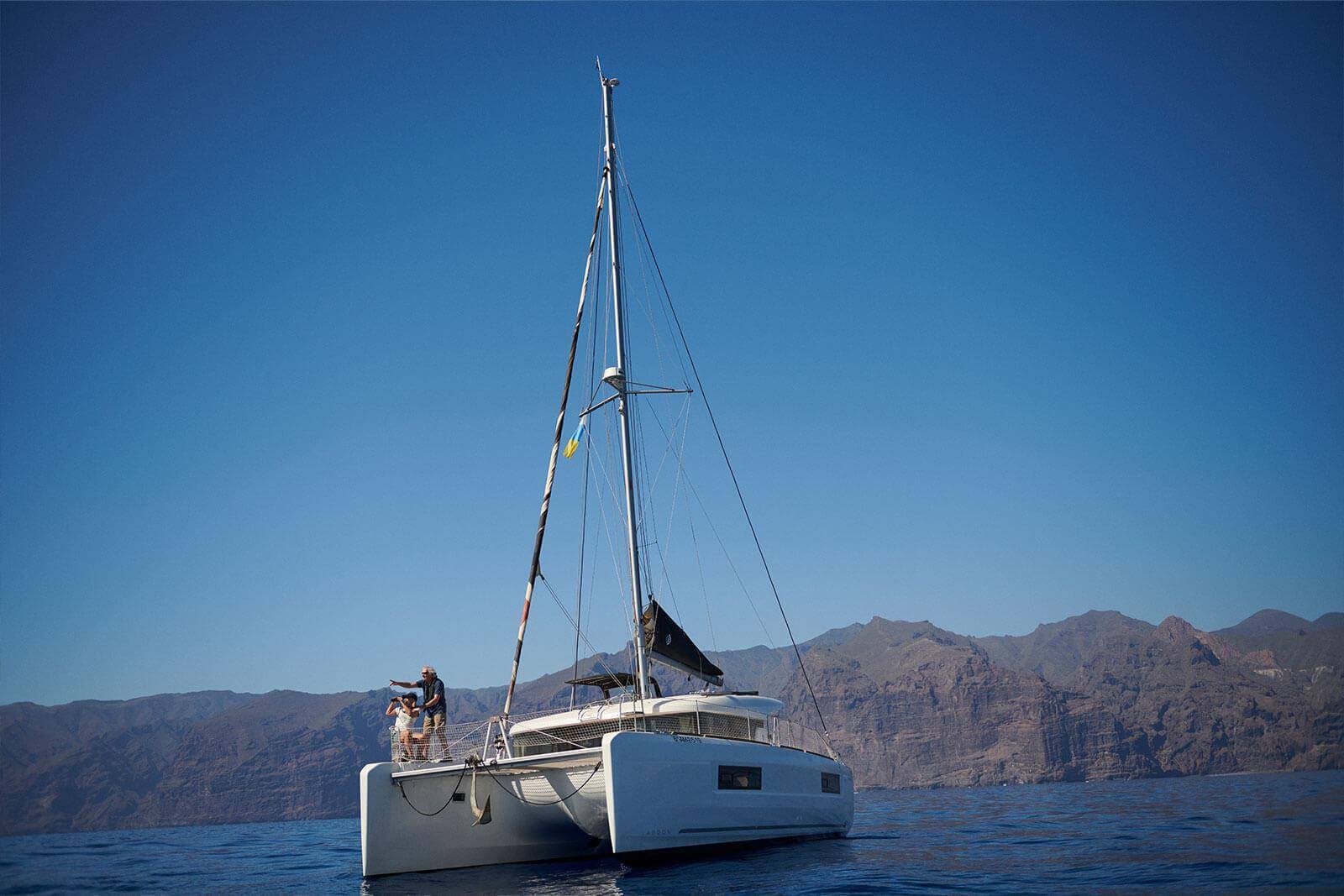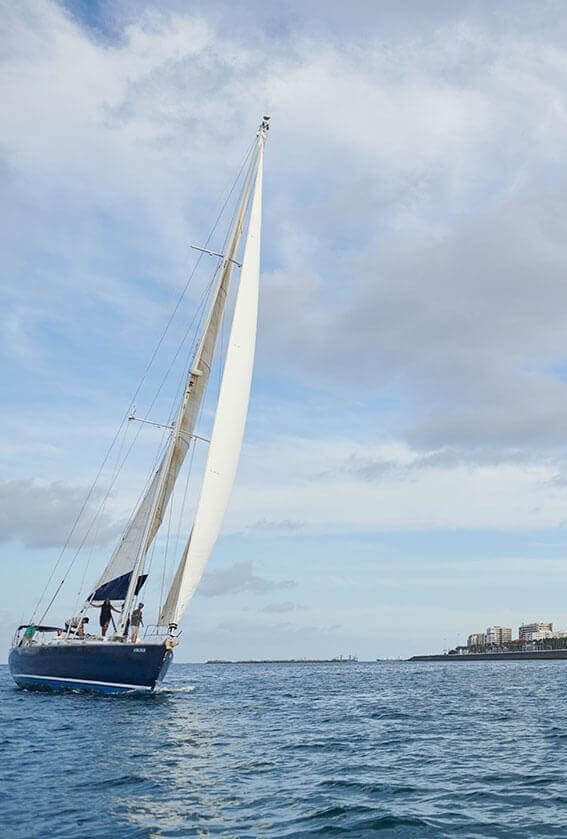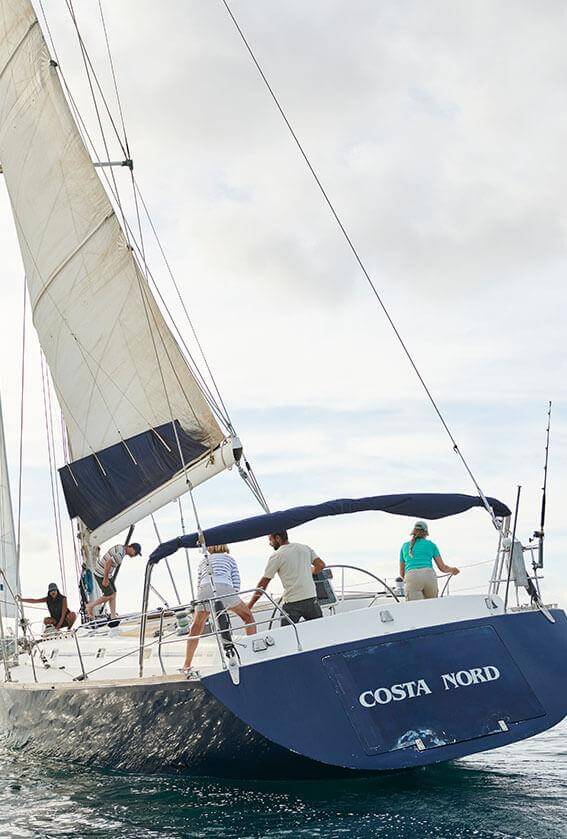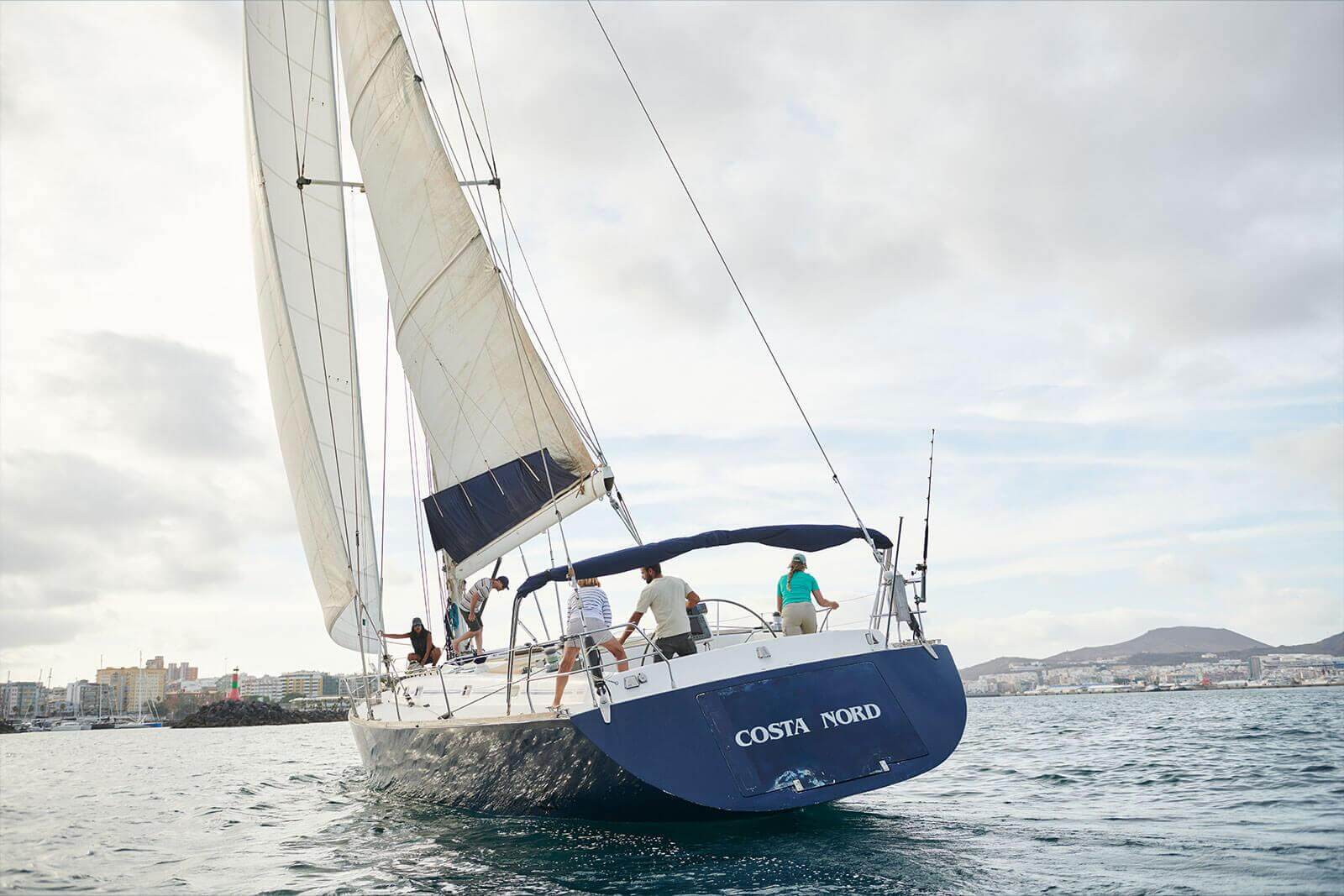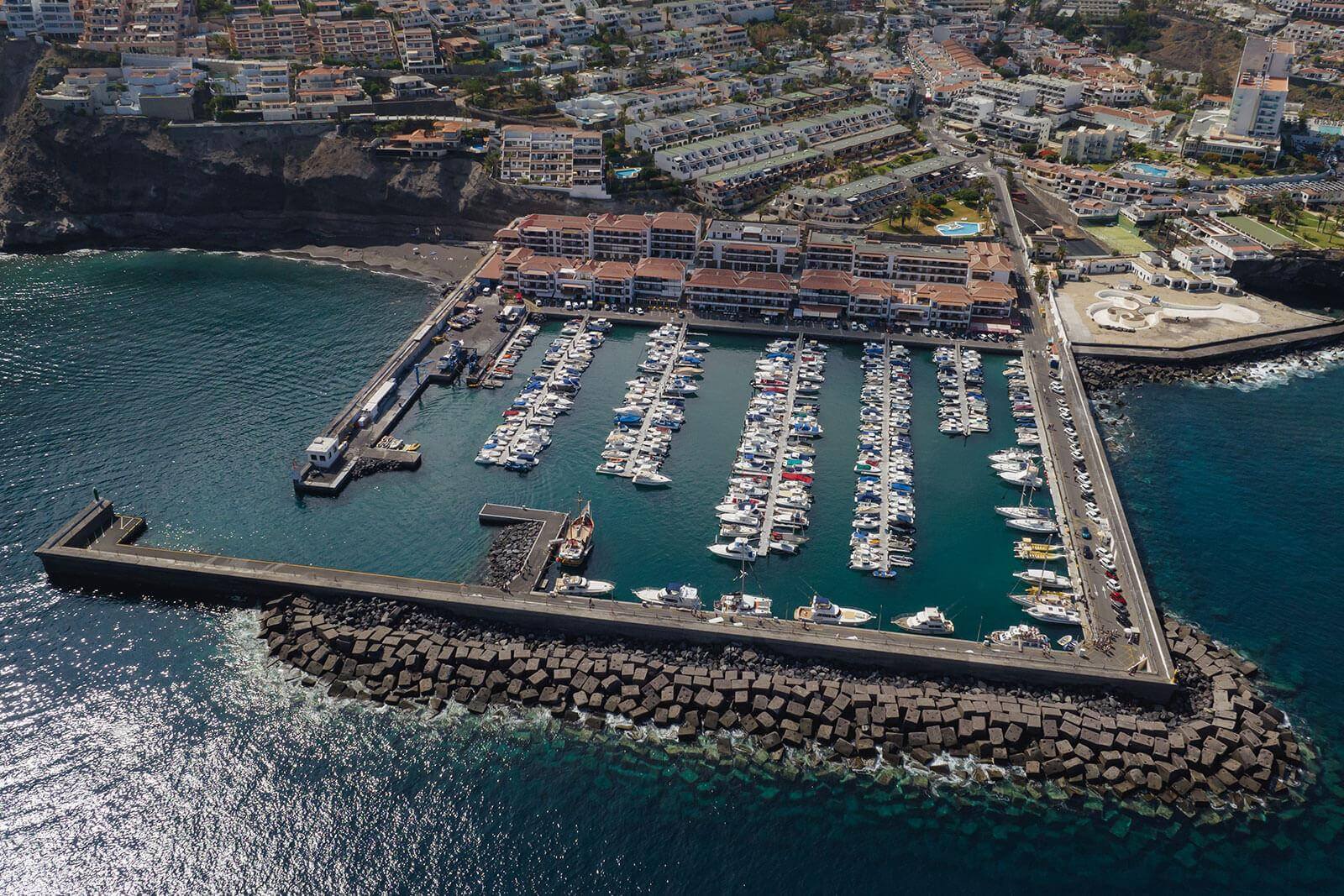Because of their geographical location and good climate, the Canary Islands offer exceptional conditions for sailing. The characteristics of their climate and the air currents are determined by the influence of the trade winds that bring a constant breeze to the archipelago, perfect for sailing all year round.
Sailing 365 days a year
The Canary Islands have one of the best climates in the world, with temperatures that are mild throughout the winter and not too high in summer. But when it comes to sailing, the presence of good winds is almost as important as enjoying long sunny days with good temperatures. While in many European countries sailing all year round is not possible, due to low temperatures or the absence of wind, in the Canarian archipelago one can sail 365 days a year thanks to the influence of the trade winds.
Because the climate of the Canary Islands is determined by the presence of these winds and the Azores High. The combination of these two meteorological phenomena produces a climate that stands out for its clear, bright skies, with scant rainfall, coupled with moderate temperatures in both summer and winter, thanks to the cool air and humidity they provide. These winds are ideal for sailing because of their regular nature, enabling one to enjoy anything from relaxed family voyages to more extreme outings where you can experience real speed. And this is because the trade winds have different intensities depending on the part of an island we are in at any given time.
The importance of the trade winds for sailing
The Spanish name of the trade winds, “alisios”, comes from the Latin root “alis”, meaning smooth, which in part defines their stable, moderate nature. These air currents are present all over the planet, not only in the Canary Islands. They are cool, damp winds which blow on a maritime route regularly from east to west from areas of subtropical high pressure towards equatorial low pressures. In the northern hemisphere they blow from north-east to south-west and in the southern hemisphere from south-east to north-west.
In the 15th century, these winds determined navigation under sail and the consolidation of the trade routes. The Portuguese, who were great navigators and conquistadors, exploited their particularities to establish their navigation routes, in both the north and the south of the Atlantic Ocean. For the return journey from West Africa to Europe, they used the trade winds, going into the Atlantic to then sail up towards the Azores and reach the European continent.
Christopher Columbus was another navigator who took advantage of the trade winds when he proposed opening up a new route to the Indies via the Atlantic, without having to skirt around Africa. These winds brought his expeditions to the Canary Islands, which he used as a base port before embarking on the great adventure that would lead him to discover America.
Particularities in the Canary Islands
Although the trade winds mean one can sail practically all year round in the Canary Islands, their influence is actually greater over the summer months. The dominant air currents blow at a regular speed of around 20 km/hr., an invitation to practise any modality of sailing. Light sailing boats, cruisers, windsurfing or kitesurfing all provide sports’ fans with endless hours of fun in the sea.
Another particular feature of the influence of the trade winds is the fact that the archipelago is comprised of islands. The wind accelerates in some areas, on coming into contact with the coast. This phenomenon occurs in nearly all the islands, but is particularly attractive for extreme sailing east of Gran Canaria and Lanzarote, and south-east of Fuerteventura.
These three enclaves are famous throughout the world for the extreme wind conditions recorded in the months of June, July and August, as a result of which important regattas and international championships are held here. In the case of Gran Canaria, for over three decades now the beach of Pozo Izquierdo has hosted one of the most important PWA windsurfing world championship trials. And Fuerteventura is internationally renowned for another trial on the PWA circuit, which has been held on the beach of Sotavento for nearly 40 years.
The natural propulsion for crossing the Atlantic
The trade winds favour boat crossings of the Atlantic Ocean from Europe. And the Canary Islands are the natural port of departure for such crossings. One can use the propulsive force of these winds to reach the other side of the ocean from any port in the archipelago. But it is not advisable to do so at any time of year. The ideal season for making the crossing is between November and January, thus avoiding the storm and hurricane season in the Caribbean.
But the trade winds are also the driving force for vessels returning to Europe from the Caribbean. In this case, the voyage across the Atlantic should be undertaken in the months of April and June, and the most common route passes through Bermuda, the Azores and from there to the different continental ports.



